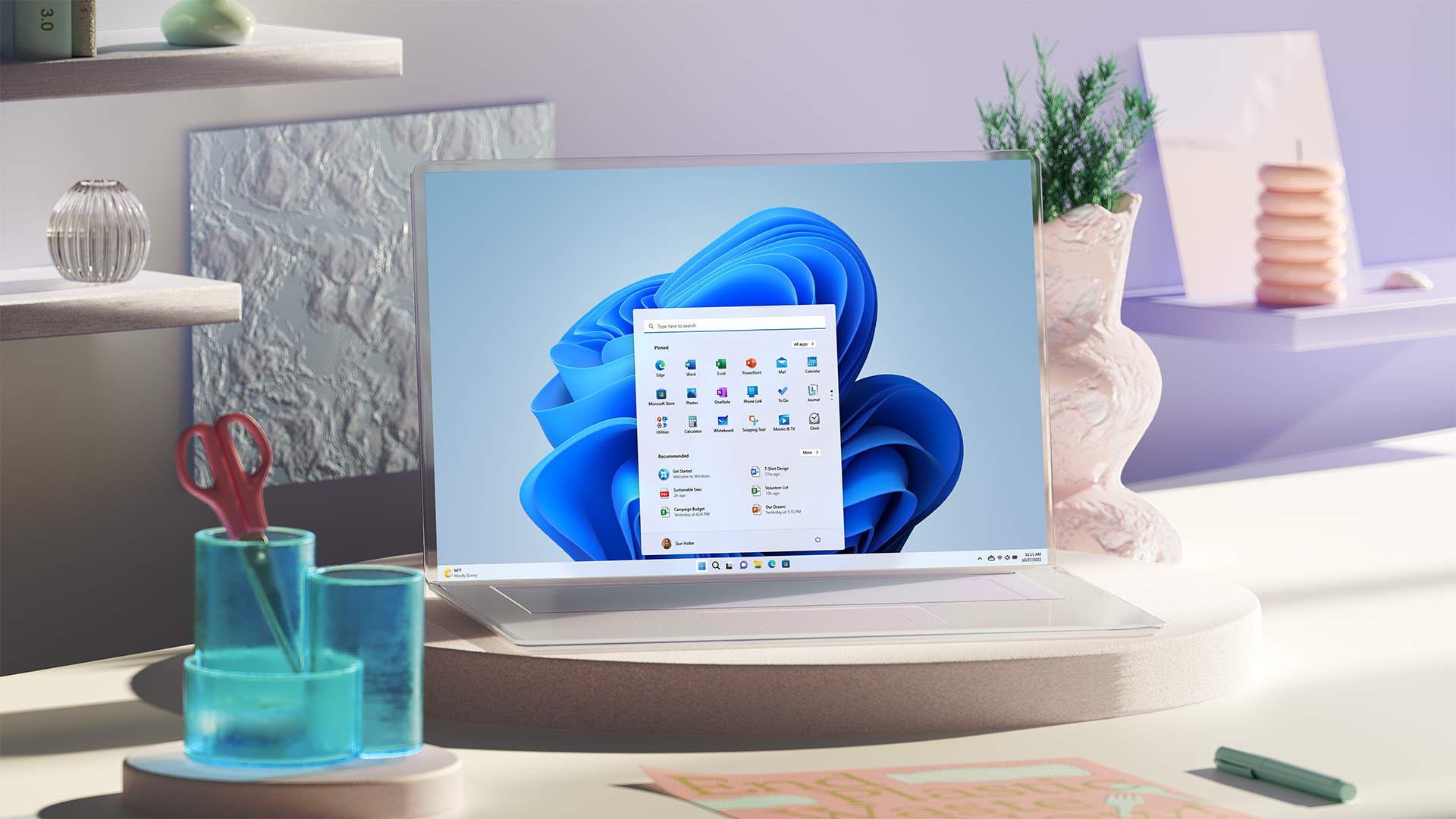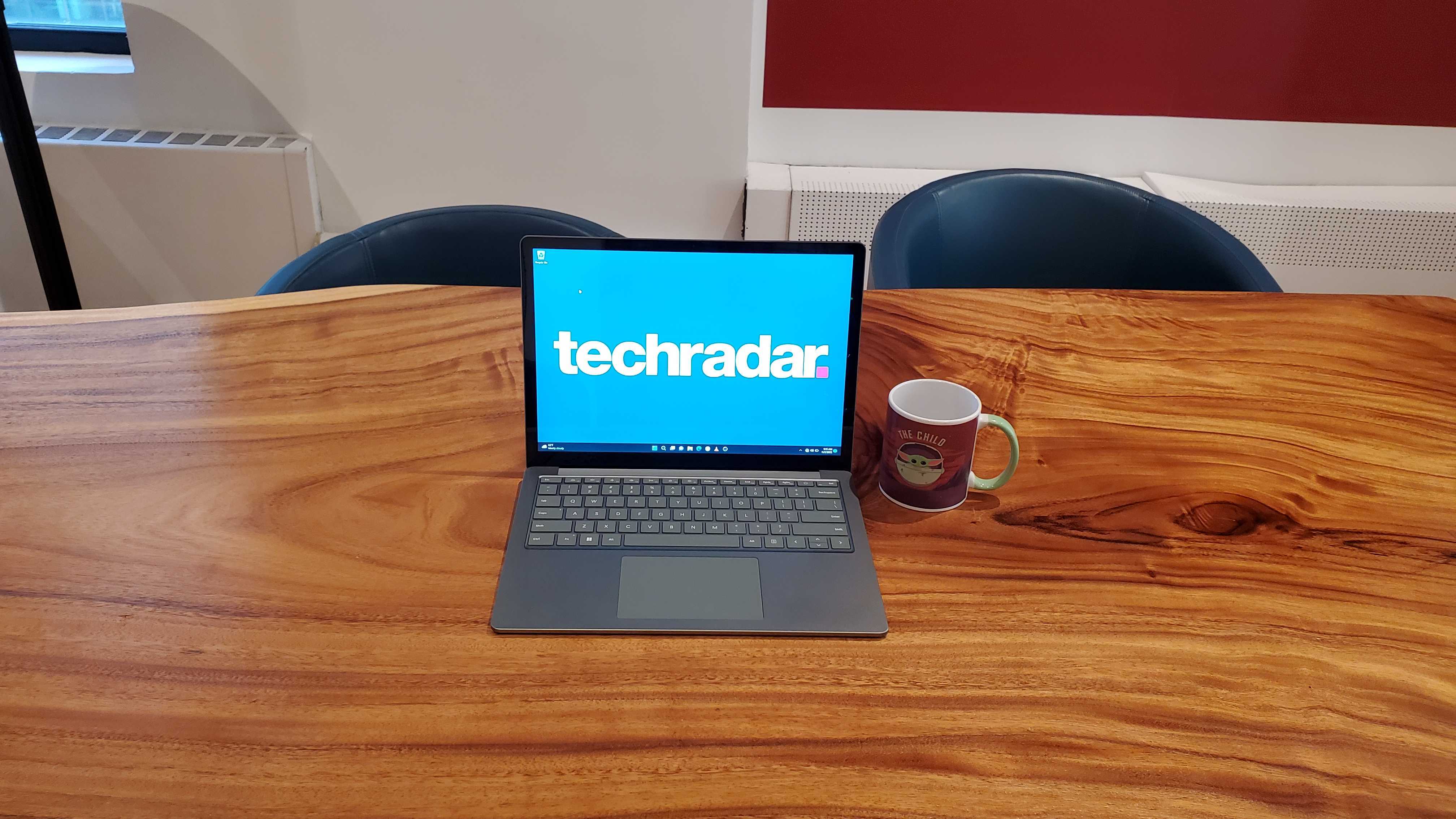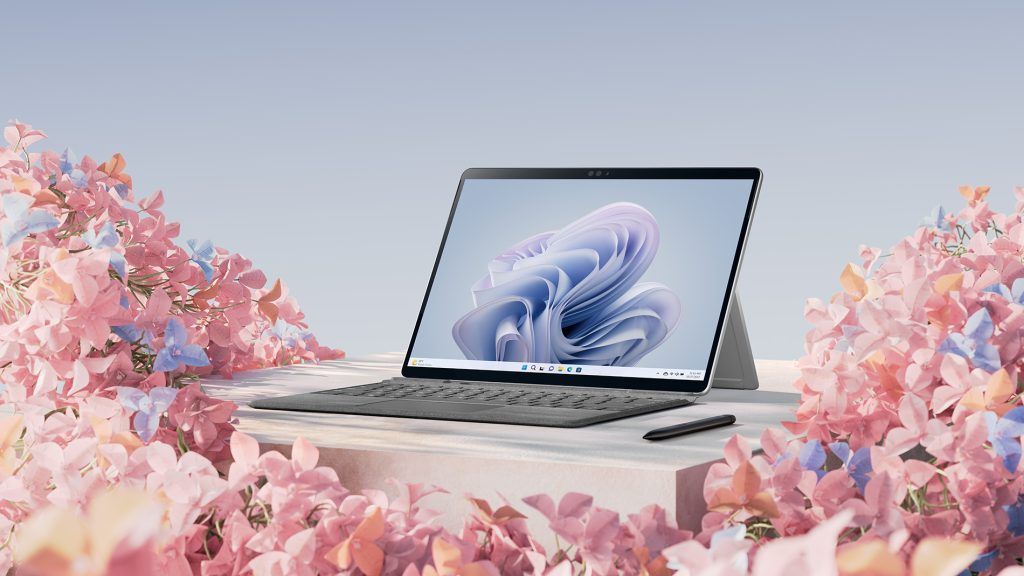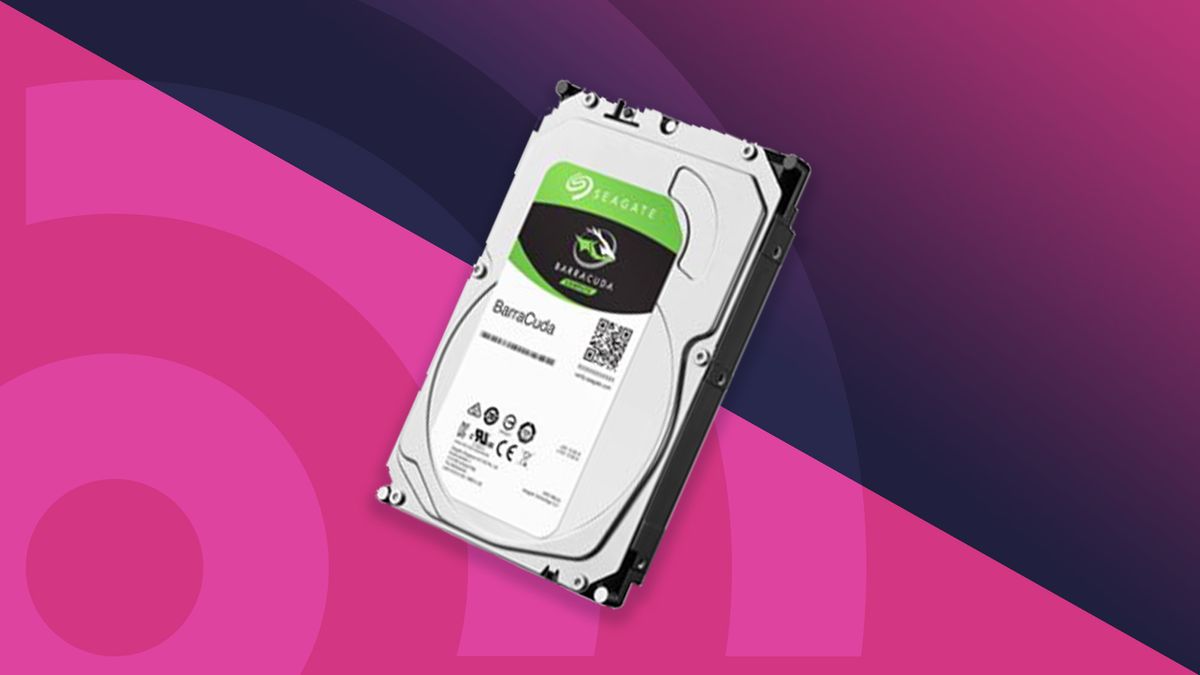What Kind of 2022 Did Microsoft Experience? The company has made some big moves over the course of this year, including a gargantuan nearly $70 billion acquisition – which has been mired in controversy – and it also rolled out its first major feature update Windows11. Let’s take an in-depth look at how Microsoft has fared over the past year across software, hardware, and gaming.
Windows 11’s big update (and buggy updates)
Windows 11 is still relatively new, having launched in late 2021, and the biggest thing that happened to the operating system this year was the debut of its first major update. (Remember that there is now only one feature update per year instead of twice a year as in the past). That Windows 11 2022 update (colloquially known as 22H2) was unveiled in September and brought a fair amount of polish along with some important and useful interface changes. We’ve also been treated to a new system of “Moments,” fancy Microsoft lingo for minor updates applied more agilely as needed outside of the major annual feature upgrade.
Notable improvements included the introduction of File Explorer tabs, which allow multiple folders to be opened in one file explorer window, just like there are multiple tabs in a browser. This was the delivery of a long-promised feature from Microsoft. The taskbar also got a lot of attention due to the introduction of a taskbar overflow panel, and after much clamor from many Windows 11 users, the drag-and-drop feature has finally been brought back to the taskbar.
In fact, it seems to have been something of a theme for the year that Microsoft listened more to feedback and user needs than another aspect of the taskbar that got a lot of complaints – the removal of the option to ungroup apps in the bar, a feature that is in Windows 10 – seems to be fixed. Or at least that facility was present during testing with Windows 11 and should be here soon, fingers crossed for those who don’t want to combine multiple instances of the same app in the taskbar.
The feeling that Windows 11 is still a work in progress lingered as Microsoft had to do a lot of refining and overhaul to bring various parts of the UI into better shape (and get rid of cluttered outdated corners of the UI) – plus frustrating bugs were another Problem.
While there haven’t been any show-stoppers in terms of Windows 11 bugs throughout 2022 (like Windows 10 has in the past), we’ve reported far too many glitches and some pretty nasty ones. Like Printers that have had much of their functionality removedfor example as well Gremlins that dragged the power level down in different waysand Gamers came under fire also from some seriously annoying bugs. File Explorer bugs also seemed to be particularly prevalent, which is a cause for concern given that this is the core pillar of the user interface (the very files and folders you work with on a daily basis).

Perhaps the real acid test we can use to gauge Windows 11’s success in 2022 is how many people have switched to the operating system (or, of course, bought a new PC with the operating system installed). According to Statcounter numbers (as of November 2022, the latest available at the time of writing), 16% of all Windows users use Windows 11. That’s not great for an operating system that’s been out for over a year, especially when you considering Windows 7 holds a market share of almost 10%. In other words, a completely outdated operating system is not far behind.
Additionally, a year into its reign as Microsoft’s cutting-edge operating system, Windows 10 had achieved nearly 30% adoption, nearly double what Windows 11 had achieved. However, Windows 11 is somewhat hampered because some people can’t upgrade because their PC doesn’t meet the stricter requirements (especially on the security front), so Microsoft expected the migration to be slower when they baked these elements into the design of the operating system.
Overall, Windows 11 has certainly made reasonable progress in applying key interface changes, but we’d like to see more progress and in particular a better effort at fighting bugs, although we feel an overhaul of Microsoft’s QA processes is long overdue.

surface so-so
Just like any other year, another bunch of refreshed Surface devices popped up.
In June we got our first look at the Surface Laptop Go 2, which didn’t differ much from the original laptop but made some useful improvements and remains a solid choice for a compact notebook.
Then in October, at a major Microsoft event, we witnessed the unveiling of the Surface Pro 9 and Surface laptop 5next to the Surface Studio 2+.
Unfortunately, this wasn’t the best crop of Surface hardware for Microsoft. First off, the Surface Laptop 5 failed to wow us and turned out to be a spectacular mid-range laptop. Not terrible, but hampered by performance issues and definitely not worth the high price tag for the laptop.
The Surface Pro 9 certainly turned out to be a better device and made some commendable advances over the Pro 8. It also made an interesting move by having two flavors: a 5G model with a Qualcomm SQ3 (ARM) CPU and a version with an Intel processor, with the former being a great option for some (for example, business people on the go are), albeit with ARM-related gremlins in the works. The Pro 9 remained pricey, but overall an undeniably slick device and a good upgrade over its predecessor in terms of performance.
The Surface Studio 2+ received only a minor upgrade, as the 2+ (rather than 3) called it, but Microsoft implemented some solid changes, though nothing particularly exciting. Which roughly sums up what’s happened on the Surface frontline overall: Nothing bad, certainly – certainly not with the Surface Pro 9 – but nothing great either.

Game for an acquisition
In January, Microsoft has bought gaming giant Activision Blizzard in a massive takeover for nearly $70 billion. Yes, this Activision – the one with franchises like Call of Duty, Diablo, Overwatch, World of Warcraft and many other well-known games in its stable.
The scale of this deal shouldn’t be underestimated, meaning future Xbox Game Pass owners could get the next Call of Duty blockbuster for free as part of this subscription (while PlayStation fans will need to plunk down cash, and we’re all very familiar with the staggering cost of gaming these days).
In fact, the waves of this deal are still going on, because at the time of writing this article, the The Federal Trade Commission (FTC) has filed a lawsuit to block Microsoft’s takeover on the grounds that it could crush Xbox console competitors.
Of course, Microsoft has given us a slew of assurances that it won’t use its weight anticompetitively after acquiring Activision, but doubters abound, and the FTC points to Microsoft’s history and the ZeniMax (Bethesda) acquisition . While this case also promised not to withhold games from competing consoles, the FTC notes that titles like Starfield, Redfall and Elder Scrolls 6 were made Xbox exclusives after the takeover.
Microsoft’s buyout of Activision could possibly still fail at the last hurdles.

Advertisement sickness – but with a glimmer of something positive?
While you might expect ads to appear in a web browser, this is not the case in your operating system. Because, you know, you paid good money for this operating system, in the case of Windows anyway (or good money for the machine it came on, and that was part of the bill).
But ads taking up space in Windows menus or panels became an issue again in 2022 when Microsoft was testing — and note, these were just experiments that didn’t make it to the release version of Windows 11 — ads for A ride in the User Session (Shutdown) menu. And even more annoying, the company also briefly flirted with advertisements in File Explorer, the central pillar of the Windows interface. That these waters were even checked is really worrying.
All of this could give the impression that advertising will be a thorn in the side of Windows 11 users in the future – given Microsoft’s previous form, this is of course not new – but another possibility has only emerged late in the year.
Namely, the notion that Microsoft could shift to low-cost PCs that are sold by subscription, rely on cloud services, and are supported by advertising (to make them cheaper – so there would be an advantage in that case). That was just a rumourwas picked up (in November) via a Microsoft job ad, but earlier this July, Microsoft CEO Satya Nadella spoke about integrating ads into its products.
There were definite groans at this prospect, but as we’ve discovered, in a livelihood crisis where not everyone may be able to afford a new PC, that could be good to make Windows computers more accessible to those struggling with money.

head in the clouds
Speaking of cloud services tied to those ad-supported cheap PCs, that’s one area where Microsoft has been going from strength to strength in 2022. Cloud revenue was strong from the beginning of the yearand then in October, Microsoft’s financial results for the first quarter of 2023 showed that while its Windows division faltered — and actually declined 15%, in part due to the slump in PC sales this year — Cloud revenue increased 24% compared to the same quarter of 2021.
Microsoft made $25.7 billion in just one quarter — more than half of its total revenue for that period — if you were in any doubt about where the future lies to bank the software giant’s coffers.
Final Thoughts
It hasn’t been Microsoft’s best year with the PC slump — but its cloud revenue was a clear highlight, and after these various experiments with advertising in Windows 11, the company may have future plans to boost profits in other low-cost ad-supported ways systems.
2022 was a pretty standard year for Surface hardware, albeit with some solid upgrades for some devices. And Windows 11 was a similar case, essentially making some sensible progress, albeit with thorny side-notes in the form of bugs. A highlight with Windows 11, however, was that Microsoft listened more to user feedback, although arguably some of the rollouts, made by popular demand, should have been addressed more quickly.
This mammoth acquisition by Activision Blizzard remains one to watch as it will potentially have a huge impact on the gaming industry over the next year if it goes through; but it feels like there’s still a distinct possibility that it’s going to go off the rails.





